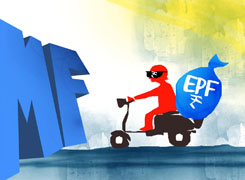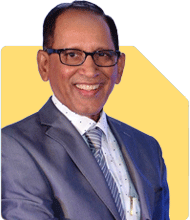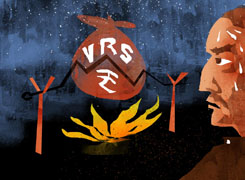R P Yadav | Answer |Ask -Follow
HR, Workspace Expert - Answered on Feb 29, 2024
Over the years, he has been the recipient of numerous awards including the Lifetime Achievement Award from World HR Congress and HR Person Of The Year from Public Relations Council of India.
... more

Sir thank you for your prompt reply. I have the following queries: 1. As I have completed 10 years of service, can I still withdraw complete EPS amount. 2. For getting pension immediately after retirement as I understand I need to fill form 10D. Can this form be filed online also. 3. After I retire when should I submit the form 10D to EPFO Office to start getting pension. 4. I would be retiring on 30th April 2024 so for how many years can I earn interest on my EPF Account without withdrawing it and what would be my last date by which I should apply for the claim. 5. While applying for the EPF Account after the maximum extended period possible can I apply for the claim online. Thanking you in advance.
EPS Withdrawal After 10 Years of Service:
If you have completed less than 10 years of service or have attained the age of 58 years (whichever is earlier), you are eligible for lump-sum withdrawal from your EPS account.
However, if you have completed 10 or more years of service, you cannot withdraw the EPS amount. Instead, you can opt for a Scheme Certificate by filling Form 10C along with the Composite Claim Form (Aadhaar or Non-Aadhaar).
The Scheme Certificate allows you to transfer your pension benefits if you join another employment later.
Pension will be paid to you after attaining the age of 58 years123.
Filing Form 10D for Immediate Pension:
To receive pension immediately after retirement, you need to fill Form 10D.
Unfortunately, Form 10D cannot be filed online. You’ll need to submit it physically to the EPFO Office.
Submission of Form 10D:
After your retirement, submit Form 10D to the EPFO Office to initiate the process of receiving pension.
Ensure that you complete all necessary documentation accurately.
Interest on EPF Account:
Until you decide to withdraw your EPF amount, it continues to earn interest.
As of now, the interest rate is determined by the EPFO and is subject to change periodically.
Since you are retiring on 30th April 2024, you can continue earning interest until you decide to claim your EPF.
Claiming EPF Account After Maximum Extended Period:
After the maximum extended period (usually 3 years of inactivity), you can still apply for EPF withdrawal.
While the process may not be available online, you can submit the necessary forms physically to the EPFO Office.
Remember to consult with your employer or the EPFO directly for any specific details related to your individual case. Best wishes for your retirement!
You may like to see similar questions and answers below
Milind Vadjikar | Answer |Ask -Follow
Insurance, Stocks, MF, PF Expert - Answered on Sep 06, 2024
Ramalingam Kalirajan |10902 Answers |Ask -Follow
Mutual Funds, Financial Planning Expert - Answered on Jun 03, 2024
Milind Vadjikar | Answer |Ask -Follow
Insurance, Stocks, MF, PF Expert - Answered on Dec 13, 2024
Milind Vadjikar | Answer |Ask -Follow
Insurance, Stocks, MF, PF Expert - Answered on Mar 20, 2025
Radheshyam Zanwar |6751 Answers |Ask -Follow
MHT-CET, IIT-JEE, NEET-UG Expert - Answered on Dec 19, 2025
Radheshyam Zanwar |6751 Answers |Ask -Follow
MHT-CET, IIT-JEE, NEET-UG Expert - Answered on Dec 19, 2025
Samraat Jadhav |2514 Answers |Ask -Follow
Stock Market Expert - Answered on Dec 18, 2025
Reetika Sharma |432 Answers |Ask -Follow
Financial Planner, MF and Insurance Expert - Answered on Dec 18, 2025
Reetika Sharma |432 Answers |Ask -Follow
Financial Planner, MF and Insurance Expert - Answered on Dec 18, 2025
Reetika Sharma |432 Answers |Ask -Follow
Financial Planner, MF and Insurance Expert - Answered on Dec 18, 2025
Samraat Jadhav |2514 Answers |Ask -Follow
Stock Market Expert - Answered on Dec 18, 2025

Kanchan Rai |648 Answers |Ask -Follow
Relationships Expert, Mind Coach - Answered on Dec 18, 2025
Kanchan Rai |648 Answers |Ask -Follow
Relationships Expert, Mind Coach - Answered on Dec 18, 2025
Anu Krishna |1754 Answers |Ask -Follow
Relationships Expert, Mind Coach - Answered on Dec 18, 2025

























